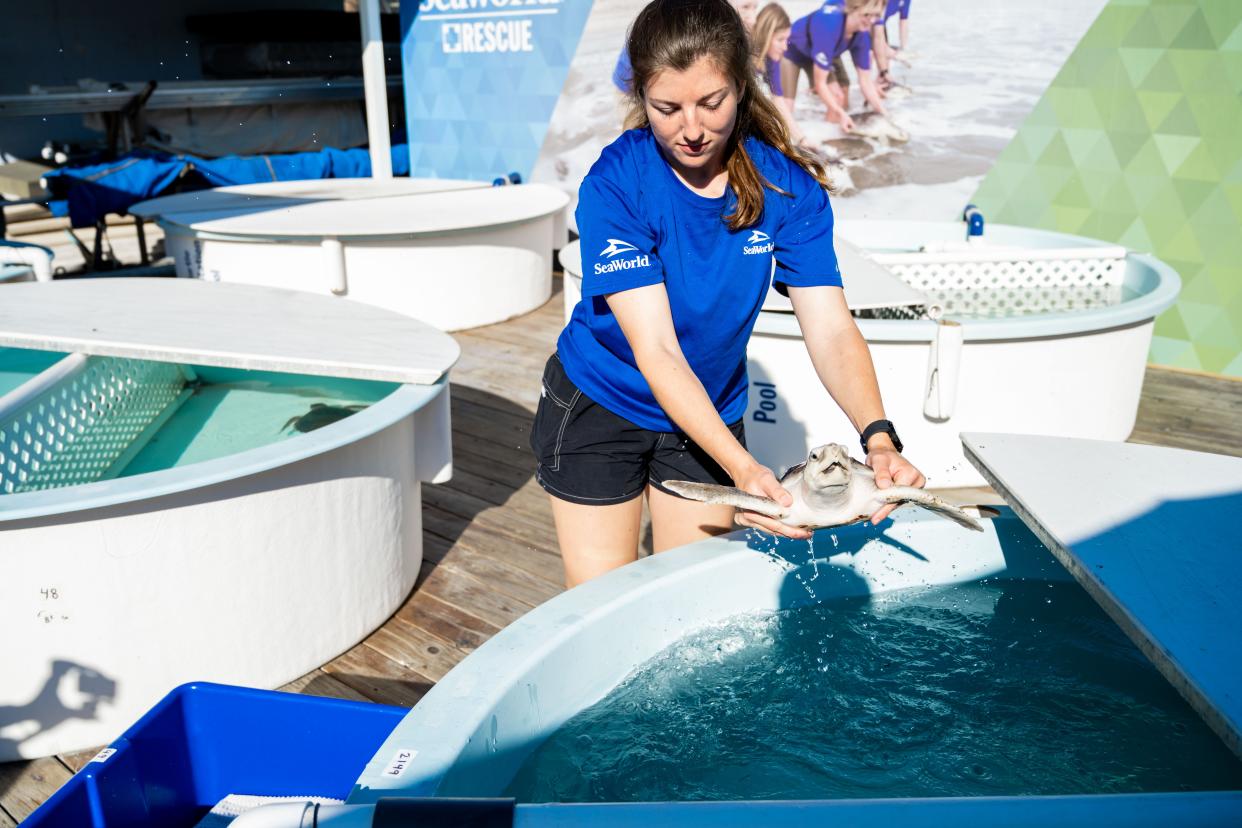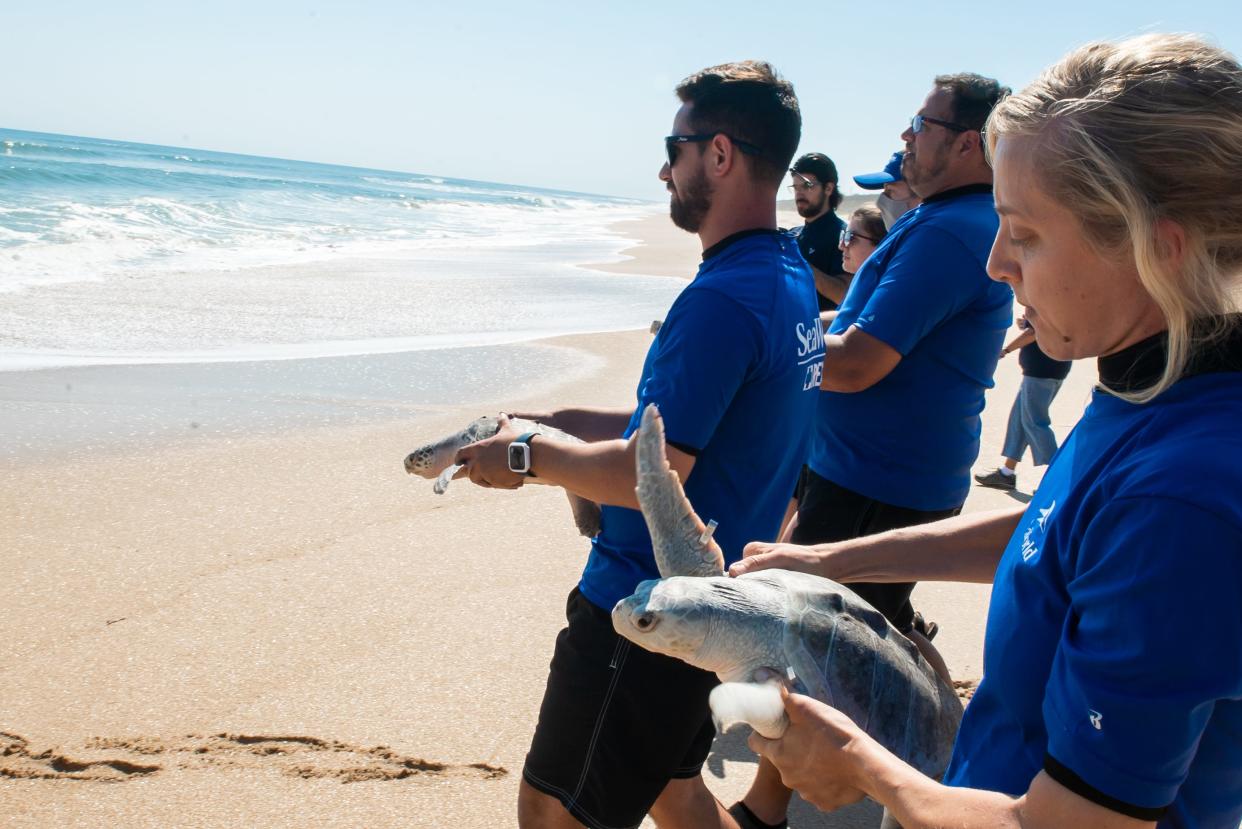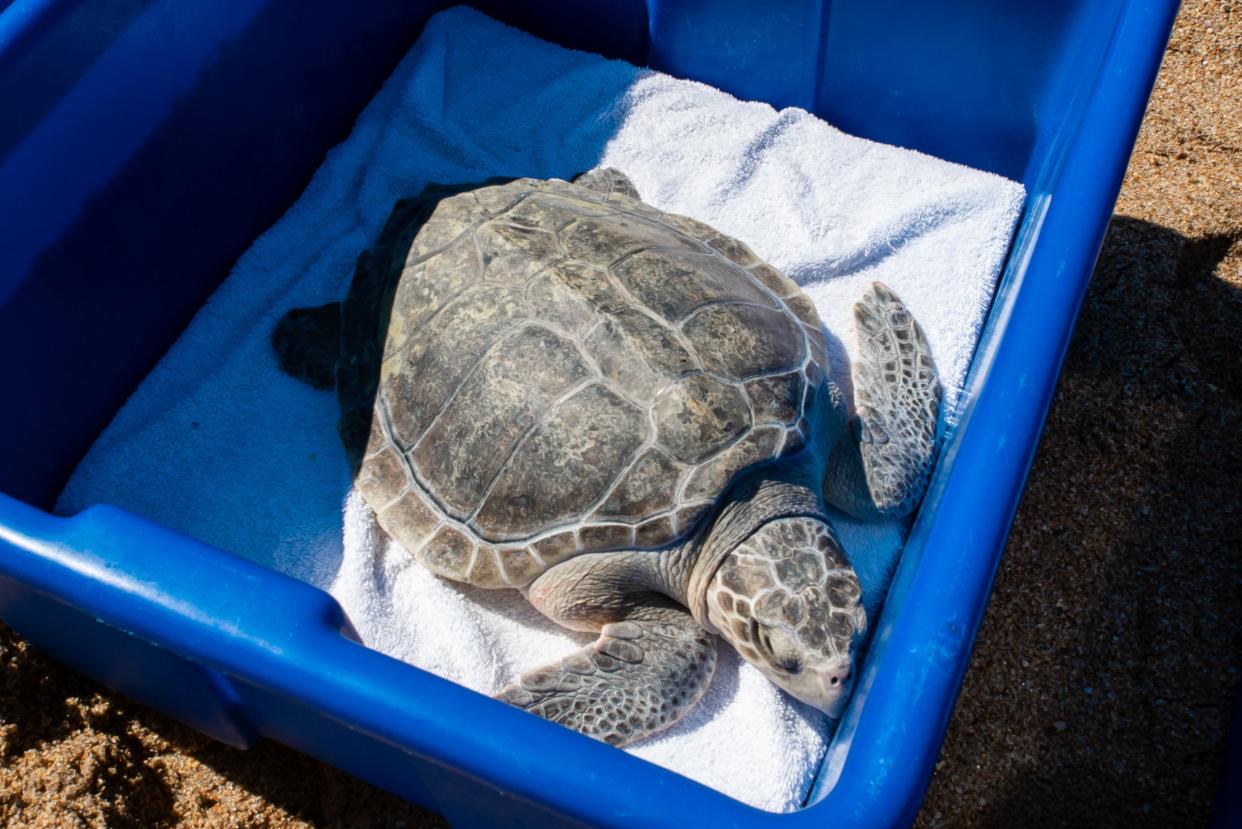From the Cape to Florida: SeaWorld Rescue releases rehabilitated Kemp's ridley turtles
Ten Kemp’s ridley turtles found off the shores of Cape Cod last November were returned to the ocean on Wednesday by SeaWorld Rescue operations at the Canaveral National Seashore in Orlando, Florida.
These turtles, originally rescued by the Massachusetts Audubon, National Marine Life Center (NMLC) and the New England Aquarium (NEA) in November 2021, were flown to SeaWorld Rescue in Orlando, Florida on Dec. 2 for further rehabilitation.
Kemp’s ridley turtles have been designated as endangered since 1970 and are considered to be the most endangered species of turtle, according to the National Wildlife Federation.
How Kemp's ridley turtles end up at the Cape
Margaret Mariolis, a senior animal care specialist at SeaWorld Rescue, described how young Kemp’s ridley turtles, who primarily live in the warm Gulf streams of southern Texas and northern Mexico, could make it to the Cape.
“Just like humans, juvenile Kempies (Kemp’s ridleys) go off and explore their world,” Mariolis explained in a telephone interview from Florida. “And they often are swept up the coast by the Gulf.”
As the waters in the Northeast cool during the fall months, so do the internal temperatures of the many species of turtles who were caught in the Gulf and carried to the waters around Cape Cod.
Minus the leatherback, turtles are cold-blooded animals, meaning their internal body temperature corresponds with the temperature of the water around them. Because of this, many turtles, trapped by the “hook” of the Cape become “cold-stunned” and unable to move when the waters cool in the fall, leaving them at the mercy of the tides until they are eventually washed ashore, according to the Massachusetts Audubon Wellfleet Bay Wildlife Sanctuary.
More: Cold-stunned sea turtles rescued on Cape transported to rehab facilities
“They basically go into the equivalent of a coma, and are stranded on the shores of Massachusetts and other New England beaches,” Mariolis said.
This phenomenon of washed-ashore cold-stunned turtles is referred to as “turtle stranding season,” and lasts anywhere from October to December, according to Lisa Becker, director of the Marine Rehabilitation Program at the NMLC.
“Sometimes it (stranding season) only lasts a few weeks, and sometimes turtles are still being brought to us in January,” she said.

The rehabilitation process
The NMLC and the NEA receive stranded turtles found by the Massachusetts Audubon and, after stabilizing the turtles so they are ready to travel, they find facilities that are able to rehabilitate them.
“These turtles come to us on the brink of dying, so we do the intensive care to bring them back as much as possible before (they are) leaving the facility to rehabilitate elsewhere,” Becker said.
Due of the sheer amount of stranded turtles brought to the NMLC and NEA — the Wellfleet Bay Sanctuary reported 749 cold-stunned turtles rescued by its organization during the 2021 stranding season — Becker said much of the work done at the NMLC is coordinating triage for the turtles for which they can’t care.
Photo gallery: Cold Stunned Turtles Fly South
“We are the only two facilities in Massachusetts that can triage and rehabilitate turtles, so we get overloaded and aren’t able to rehabilitate all of them,” Becker explained. “We essentially do for them what an ICU does for humans, and then find a more permanent rehabilitation facility.”

The 10 turtles released on Wednesday were taken from the NMLC and NEA by way of Turtles Fly Too, a non-profit made up of individuals with personal planes who volunteer to fly the turtles to their rehabilitation destination.
Once admitted to SeaWorld Rescue, the turtles undergo physical examinations, including length and width measurements, blood exams and even radiographs. Depending on the outcome of these tests, SeaWorld Rescue’s veterinarians recommend treatment plans that can range from administering fluids to nebulizing antibiotics.
Mariolis stressed that with sea turtles, it’s important to be as hands-off as possible to ensure their success when released back into the wild. A self-described “mammal person at heart,” she said she was surprised by how much she enjoys working with turtles.
“Kempies in particular are like the Jack Russells (dogs) of the ocean,” Mariolis said. “Our Kempies are always patrolling their enclosures and biting at the nets when we go in to clean them. They have this feisty and tenacious behavior inside these tiny, precious bodies.”

Mariolis also noted that, while SeaWorld gets much of the media attention for rehabilitating animals by nature of its popularity, when it comes to saving turtles, it’s a group effort.
“We’re simply one facility in a whole bucket of rehabilitation organizations,” she said. “We do what we can, but we aren’t the only facility doing this work.”
Becker echoed this.
“All of it (rescuing stranded turtles) needs to happen very fast,” she said. “It’s really a network of organizations that work together, particularly in New England where turtle strandings are common.”
This article originally appeared on Cape Cod Times: SeaWorld Rescue returns Cape Cod sea turtles to the ocean
